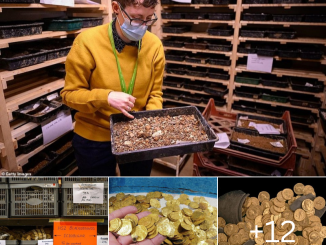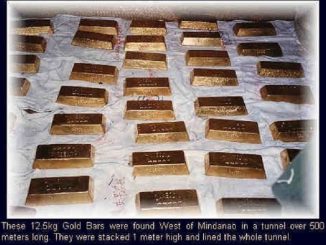The newly discovered necklace at Cavandi once belonged to someone of the upper class, made by a skilled Iron Age craftsman.

Gold necklaces help reveal a lot of information about the Iron Age. Photo: Museo Arqueológico de Asturias
Sergio Marciandi, a worker at a local water company, accidentally discovered two gold necklaces among the rocks while working in Cavandi, Asturias, northwestern Spain, CNN reported on September 13. He quickly contacted Pablo Arias, professor of prehistoric archeology at the University of Cantabria.
Arias and experts from the Asturias Archaeological Museum went to Cavandi and conducted a survey, thus discovering a second bracelet. However, it broke into many pieces. He said the necklaces are truly impressive and can help scientists understand more about the Iron Age (which lasted from about the 5th to the 2nd century BC).
A few Iron Age gold necklaces have been discovered, but most were in the 18th or 19th centuries, when archaeological techniques were limited. As a result, a large amount of information about their origin was lost, according to Arias.
In this case, the archaeological site remained intact, providing scientists with better information about the necklace’s context. “We received very accurate information about where they were found. This is very special,” Arias shared.
The two necklaces showed signs of wear at the points of contact with the wearer’s skin and clothing, meaning they were used. This type of necklace is often associated with the upper class. “Not everyone can afford to buy such a bracelet,” Arias explains.
“Both bracelets bring together all the ancient techniques of a jeweler of extraordinary skill: casting, filigree, beading, welding, combined with aesthetic and geometric motifs and designs.” , commented Ángel Villa, expert at the Archaeological Museum of Asturias.
Dating the jewelry is difficult, but Arias believes it is no more than 2,500 years old. Local authorities say the new discovery is extraordinary considering the quality and skill of the artisans who made it, and opens the door to research into one of the most representative types of Iron Age gold jewelry.


